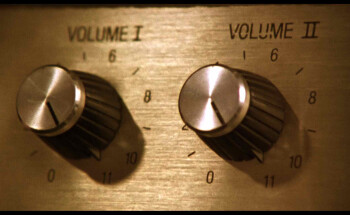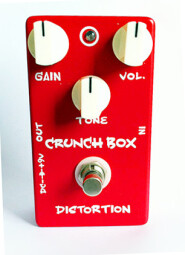After having found your clean sound, let's now look at how to color your sound with a bit of distortion.
Historically, the first distortions were discovered by chance by one Dave Davies and an amp whose speaker cone he sliced. But since it is not very Audiofanzine-like to destroy our gear, here you have a brief overview of more conservative possibilities.
Those of you who still haven’t found your clean sound, you can read here how to set your amp.
Distorted reality!
Amps that have three channels use the second one for crunch. If that’s the case with your amp, everything will be easier because the preamp stage is meant to provide you a naturally moderate distortion.
There are also “modeling amps” that allow you to choose the type of amp you want to emulate. Once again, there shouldn’t be a problem with such amps because the sound has been preset.
But the truth of the matter is most budding guitarists have amps with only one or two channels. So you will need to be crafty to get a good crunch sound!
No pain, no gain
You have two options available, one of which usually gives better results than the other:
- Use the distortion channel. With a low gain you may be able to get a convincing crunch sound. But it is not uncommon for the preamp to go quickly from a clean to an overtly distorted sound, which makes it hard to get a satisfying result.
- Use the clean channel. Since we want to saturate the preamp you shouldn’t hesitate increasing the gain and flirting with its maximum level. Increasing the master volume will also be useful to push the speakers to their limit.
And if the saturation doesn’t quite make your day, the EQ can help you with a bit of extra gain: boost all frequencies, especially the mids.
A pedal for a manly sound
If despite all your efforts the results with your amp aren’t satisfying, you will have to fork out some money.
Every multieffects processor worthy of the name includes several crunch presets and they are sometimes very convincing. But such complicated devices may discourage musicians who just want to plug in and play.
In which case, you can find a plethora of overdrive pedals, from the mythic and pricey Ibanez Ibanez TS-808 to the entry-level Behringer OD400, including the traditional Boss OD-3 and others. The not insignificant advantage of these pedals is that they allow you to have a crunch sound at low volumes, sparing you the complaints of your fellow musicians (and your neighbors). Obviously, whenever you can, I would strongly recommend you to try the coveted pedals for yourself, since each has its very particular character.
Finally, if you have won the lottery and want to make a good investment, consider a tube amp. Transistors allow us to do formidable things, but the warmth and naturalness of a cranked-up Vox, an Orange and even a Hiwatt are simply unmatched (call me reactionary if you will).


